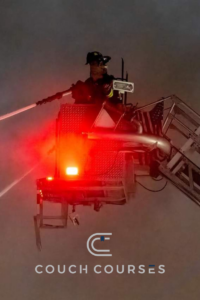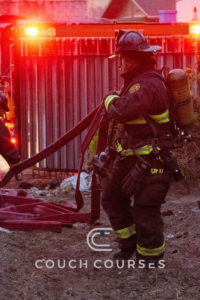Defensive vs Offensive Operation Considerations

When arriving on scene to a structure fire and creating an IAP (Incident Action Plan), the first due officer needs to determine if the initial attack will be a defensive or offensive strategy. This will be decided shortly after arrival based on several factors of the scene size-up.
Knowing when, why, and how to utilize defensive over offensive strategies takes time to understand. However, just like the old saying goes, “We risk a lot to save a lot. We risk little to save little. We risk nothing to save what is already lost”.
Here are some short answers to help first due officers make quick decisions on which strategy to choose.
When to use defensive operations
Defensive operations should be used when conditions are so harsh they prevent you from an offensive attack. Factors like structure stability and firefighter safety are your main consideration. You must rapidly take into account the following:
- Are there any victims, and are they still savable? Knowing the occupancy type and time of day can assist decision making on if victims are present or not. Also, the fire involvement could be beyond survivability.
- What type of structure are we dealing with? (Know your structure types and how fire dynamics in them: (Type I – Type 5)
- Does the smoke give indications of potential collapse? (Learn to read smoke: Volume, velocity, density, color)
- What was the building’s condition before the fire? This is where area familiarization, pre-plans, and inspections in your zone could identify potential problems with structures otherwise unknown.
Strategy of defensive operations
Defensive operations are used to keep the structure fire from “getting worse”. Victims are either not present or unsavable. In most cases, you have already made the decision that the building involved is no longer salvageable. The main strategy now is to turn your attention to preventing other structures from being involved.
How to conduct defensive operations
Defensive operations are normally done with LDH hose lines placed between the fire and exposures. This will help prevent extension. Ensure your defensive operations are done from a safe area away from potential building collapse.
Prioritize your line placement based on the following:
- Ability to secure water source
- Establishing a safe egress
- Protect endangered exposures
- Extinguishment of main body of fire

When defensive operations go transitional
Defensive operation can also be used as an initial attack until more help arrives. Then you can switch to offensive operations. This tactic is better known as a transitional attack. Many departments have adopted this tactic and use it successfully.
When to use offensive operations
Although an offensive strategy can be conducted from the outside or inside of a structure, we usually think of this as an inside operation. This is what we more commonly refer to as “interior attack”.
You can use an offensive strategy when the structure is not fully involved, and the advancement of the fire can be stopped. That’s why offensive operations are used to take aggressive action to stop the main body of fire.
This operation is used especially when there is still the possibility of viable victims inside. A coordinated fire attack and rescue operation is top priority in this circumstance.
Strategy of offensive operations
Offensive operations are all about locating, confining, and extinguishing the fire as rapidly as possible; all while adhering to OSHA’s two-in-two-out policy. This type of tactic can save more lives and property but cannot be done at the expense of firefighter safety.
How to conduct offensive operations
There are a few different sizes of handlines. Use of 1 ¾ attack lines is typical when conducting interior fire attacks. However, an attack line by itself is insufficient or may not be as effective without more supporting actions. This is why a well-balanced offensive operation must look at the following considerations:
- Coordinated ventilation operations
- Fire officers directing crews inside
- Back-up lines
- RIT teams
- Water supply established

When offensive operations go transitional
The strategy can transition to a defensive operation if the fire becomes more than what interior attack teams can handle. Incident commanders can stay on top of this by frequent CAN reports with teams and direct observations of the fire scene.
Conclusion
As firefighters and officers, we are aware that fire scenes are dynamic. Good communications, situational awareness, and proper techniques are crucial in conducting successful operations. If the current strategy is not working, quick decisions must be made. If the strategy is changed to a transitional attack by the IC, be ready to make the appropriate adjustments.
Resources
Nathan McManus
Couch Courses offers differentiated education to online Firefighters to help increase the learning and safety of our members and communities. Please click the below button to see the student-centered educational courses offered.





